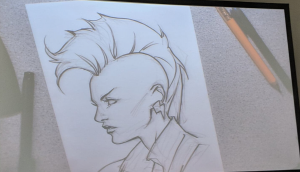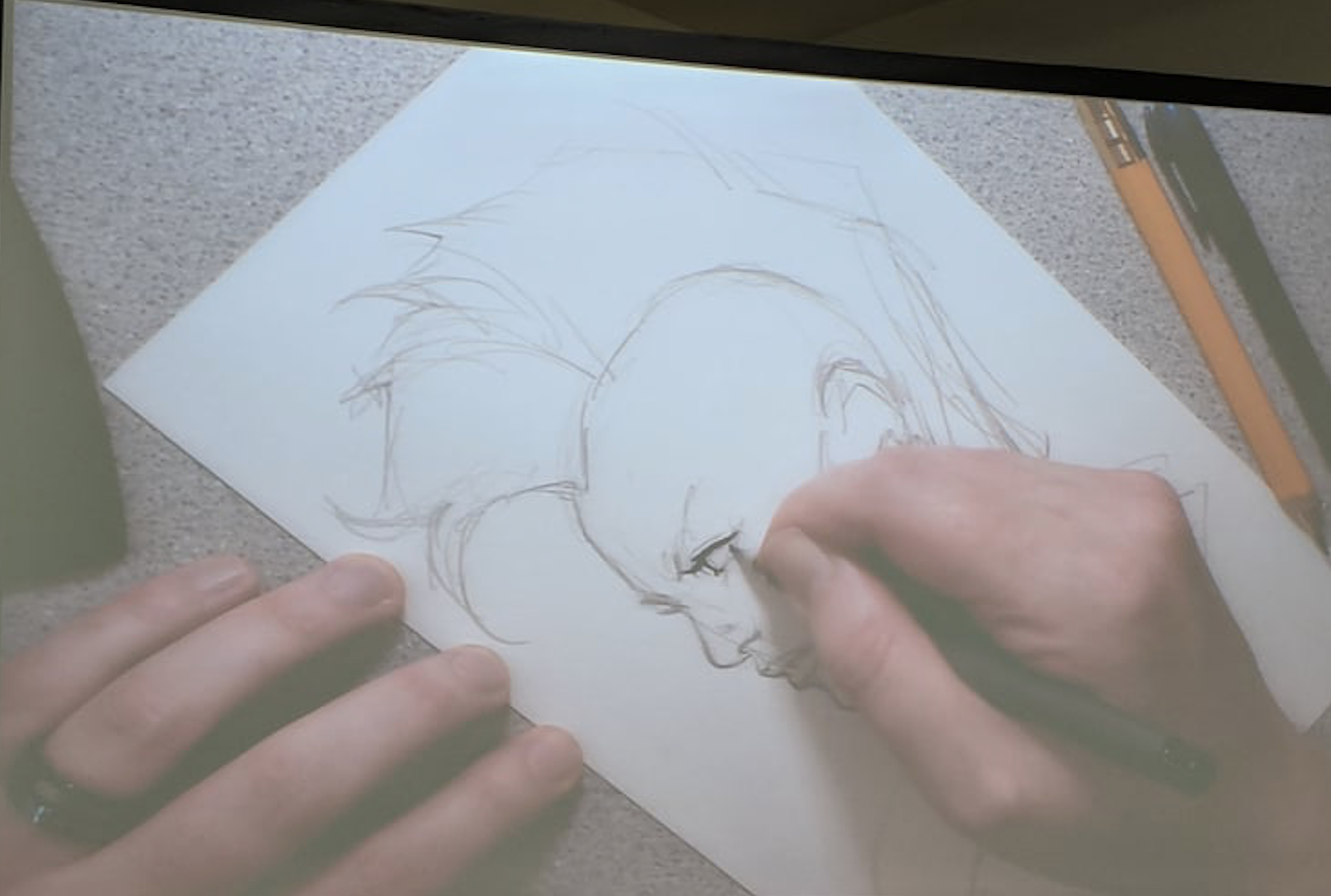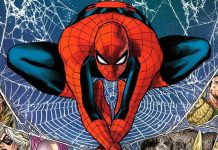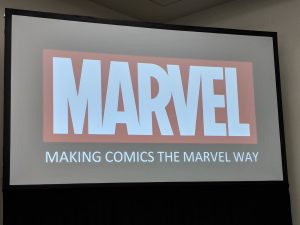
From there, the panelists discussed their specialties and their roles within Marvel. Anchored by C. B. Cebulski (Editor-in-Chief), the panel ran the gamut of the creative process and featured insights from Mark Brooks (Covers), Joshua Cassara (Pencils), Edgar Delgado (Colors), Victor Olazaba (Inks) and Nick Spencer (Writing). Each described their individual processes while also looking at the holistic portion of their roles in the creation of the final product.
As a whole, the panel was a mix of inside baseball tips and tricks as well as an illuminating work of all the manhours it takes to create something that many people can read in minutes. The differing dynamics and philosophies were front and center, with everything the aesthetic to commercial aspects of the work discussed at length. With regard to creating cover, Brooks noted that while primarily his job is to sell the book, it’s also about “just drawing the coolest damn thing.” The cultural zeitgeist is also considered, while Spencer noted that, as a writer, you have to have to have a firm idea of what is happening in your arc. At the same time, don’t let certain images be handcuffed to literally to what might happen. Giving cover artsts the widest berth as possible usually works out.
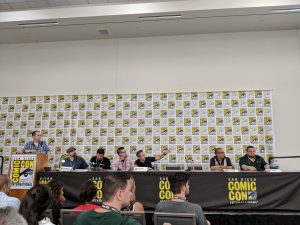
Because of the mix of people in the audience, it was a great delight to gauge their reaction of the raw pencils and layouts when compared to the final inked and colored product as well as seeing the writer’s initial words put to paper. In my immediate vicinity, I heard many oohs and aahs, when looking at the linework when compared to the fully-rendered image. And even though it’s old hat by now, hearing the current EIC of Marvel discuss the process that was pioneered by Stan, Jack, and Steve is a bit of thrill. Indeed, when it comes to writing, Spencer talked about the strengths of the method, and how it affects how he approaches the pacing and artistic considerations.
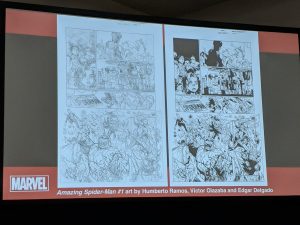
It was also admirable that there was attention paid to the delicate work of the inker in the process. There’s a depth and texture to this work, and if it goes awry, then the comic itself crumbles. Olazaba was passionate in his description of how he goes about adding depth to faces most of all, and how that only strengthens the rough pencil work. “[Inking] gives more energy to the lines,” he said. “Inkers are important artists,” Cebulski added, “It’s not about filling in the line.. it’s about adding definition to the character.”
There was talk about the frustration of deadlines and the pressure it takes to work with paper. While working digitally is a cleaner and way less stressful way to work, it is also more impersonal. The impression I got from the artists on the panel was that they were unsatisfied with the coldness of working with a digital interface. But even more so, the panel was in agreement that the process behind comics–in Marvel and in general–is that it doesn’t operate in a vacuum. Everyone relies on each other to create the final work, and it is not a job that can be described as 9-5. And while everyone at Marvel has their own style, in the end, it all comes down to storytelling.
The panel ended on a heartening note. A young fan asked about “the pictures” in the comics. “Whenever I try to draw them, they don’t look as good as in the book. What can I do to make them look better?” All the panelists were supportive: “Draw every day” was the consensus. “Start with the small stuff,” encouraged Cebulski. “Draw a star and two circles. Now you have Captain America’s shield. Always find that place to start and move on from there.”
“And always continue reading comics.”
